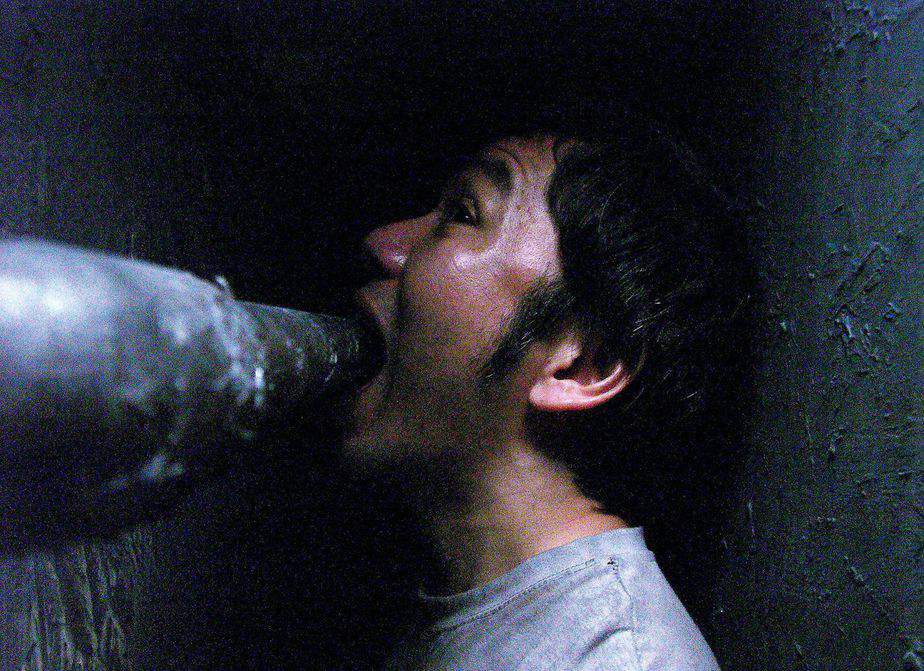The sequel to one of the most well-known J-horror franchises saw some major changes. Takashi Miike gave his stead to Renpei Tsukamoto, while the Taiwanese “flavour” of the new story also brought a change in the cast, with Ko Shibasaki, Shinichi Tsutsumi and Goro Kishitani giving their place to Rie Mimura, Asaka Seto and Peter Ho, with the only one retaining his place being Renji Ishibashi as officer Motomiya. Let us see how the new group fared.
Buy This Title

Kindergarten teacher Kyoko and her friend Madoka visit the former's boyfriend, Naoto, in the Chinese restaurant he works at. At the same time, Mr Wang, the owner, picks up his daughter's phone and the “missed call curse” begins once again, ending up almost immediately to his death. Journalist Takako Nozoe, who has been following the story since the previous deaths, also gets involved in the case soon after the murder occurs, and learns of what is going on from officer Motomiya, who, once more, is investigating the case. Soon, Madoka also receives a similar call and the consequences are equally deadly for her, as Kyoko finds her dead in her apartment, while Naoto and Takako arrive immediately after. The combined investigations of the three reveal that Mimiko's grandfather Wei Zhang is in Taiwan, and Takako asks her former husband Yuting to search for him. To their surprise, they learn that the curse has also been occurring there, while a bit later, Motomiya's report reveals that the recent bodies had coal dust in their lungs and not candies in their mouth. Eventually, the three protagonists travel to Taiwan to investigate more, but soon stumble upon a new set of deadly secrets, while Kyoko also receives a phone call.
Renpei Tsukamoto had a series of issues to face, particularly in comparison with the first film. The most significant one was the smaller budget (as far as I can see at least) which had a particular impact to the casting, which was not replaced by actors of equal experience (although I have to admit all protagonists are quite good-looking). Secondly, continuing from the original story was quite hard for the writers, since the first one did not leave that much space for expansion. To counter these two issues, Tsukamoto (who is mostly known for his work in TV dramas) and the producers made two decisions. The first one was to give the film an even more intense “teen movie” essence and the second to add the Taiwanese element, in order to move the story forward and probably to appeal to an even wider audience. The result is mixed.

On the one hand, the atmosphere Tsukamoto creates is quite terrifying, investing on the events of the original and expanding them to a larger setting, that includes, apart from a whole different country, mines, forests and abandoned buildings of which Taiwan is infamous for. Furthermore, the story expands relatively well, considering that there was not that much space to move from the original, while the whole concept of Mimi's grandfather and the children abuse concept work equally as they also add an element of social commentary, apart from the whole obsession with the mobiles one.
Where the film falls short however, is character-creation, as the majority of the protagonists, most of the time function as simple victims of the events, without having any particular impact on what is going on around them. Particularly after a point in the movie, the protagonists are relegated to scream queens and kings, for the most part. This aspect becomes even worse by the subpar acting of the three main actors, Rie Mimura, Hisashi Yoshizawa and Asaka Seto. Peter Ho as Yuting is somewhat better, but not by far.

On the other hand, the production values of the film are quite good. Tokusho Kikumura portrays the overall atmosphere of the occasionally absurd horror quite nicely, managing to induce the film with a sense of claustrophobia that applies not only to the interior sets, but also to the various locations. Madoka's death, particularly the way her body is discovered and the various scenes in the mines are the apogee of his work, along with a rotating scene in the city. Soichi Ueno's editing induces the film with a rather fast pace that suits its aesthetics perfectly, while the various flashbacks and the references to the previous movie are well placed. Peter “Duck” McDonald's sound is also quite good, heightening the overall atmosphere of horror of the production and not just on the few jump scares. The sound and the image benefit the most by the presentation of Arrow's release, with the 1080p HD and the Lossless DTS-HD looking and sounding impressively, in an effort that is definitely an asset for the film.
“One Missed Call 2” is definitely on a lower level than its predecessor, but there is enough quality here to appeal to fans of (J-) horror, particularly in the technical department.















